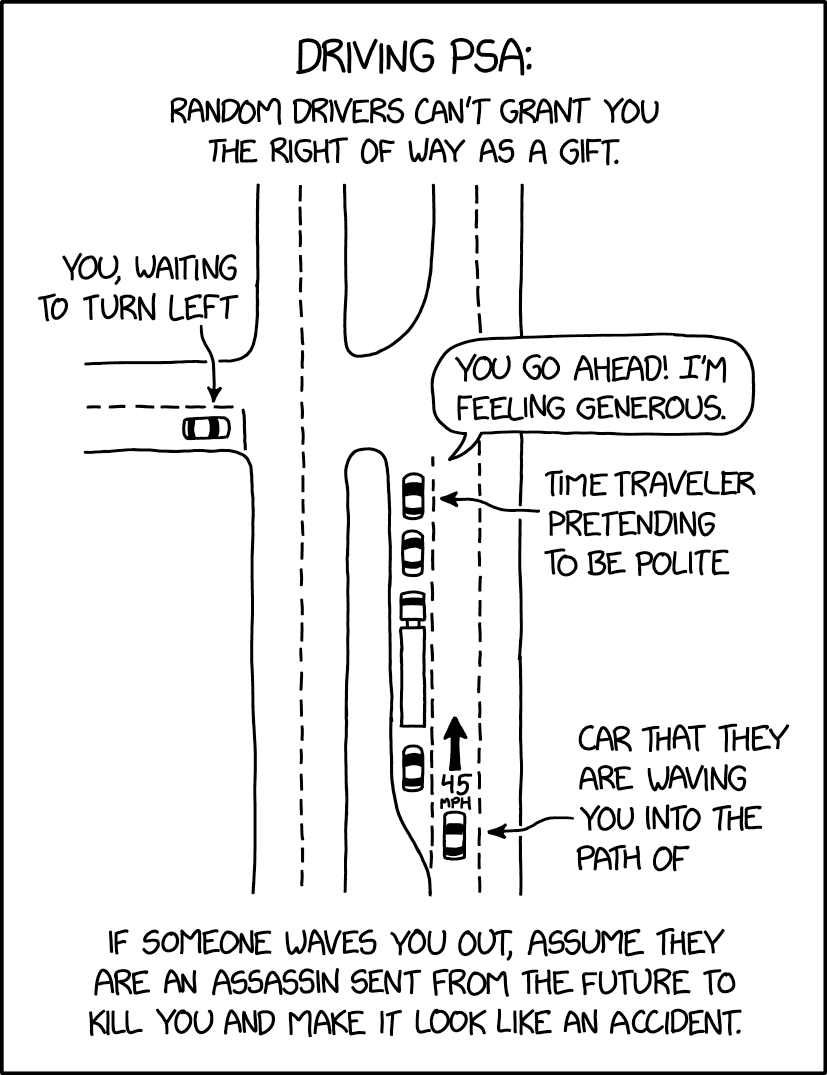this post was submitted on 14 May 2024
1403 points (99.4% liked)
xkcd
8822 readers
114 users here now
A community for a webcomic of romance, sarcasm, math, and language.
founded 1 year ago
MODERATORS
you are viewing a single comment's thread
view the rest of the comments
view the rest of the comments

I was not joking when I said a lot of transit engineers believe on it.
That one is one of the least bad I've seen. Try imagine it on the cross of two roads (actual high-speed roads, country-side). I've seen many of those.
I'm bloody sorry but did you just say this is one of the least bad you've seen?? Let me give you a different view:
Trams traverse the traffic lanes at three points, as well as one making an immediate left turn exit. There are four traffic lanes. Royal Parade has inside lanes and service lanes.
But I also don't have to imagine that at all, those are common here too and I've never had a problem at them:
Notice how the approaching lane at the bottom left has an artificial curve added to it? It's traffic calming to help slow down cars before they get to the roundabout itself.
That second picture of yours is just a normal roundabout. Try making one of the roads pass directly through it. And don't change the signaling.
I've noticed that the tram line cuts the traffic in 3 points. What is the speed of that street? Anyway, the tram line is clearly signed in a way that can be noticed on the photo. And every car there is making a weird curve, nobody is speeding anyway.
You'll have to be specific, all five of the roads that enter this roundabout are different, none actually continue through it. I think the maximum speed limit in the area is 60km/h though.
Edit: Also, the weird looking building in the first picture? That's the Royal Melbourne Hospital. There is A Lot going on at this roundabout. Though I guess as far as it not being "bad" it is probably the best intersection they could have built for this location. The cycle length if it were a signalised intersection would be insane.